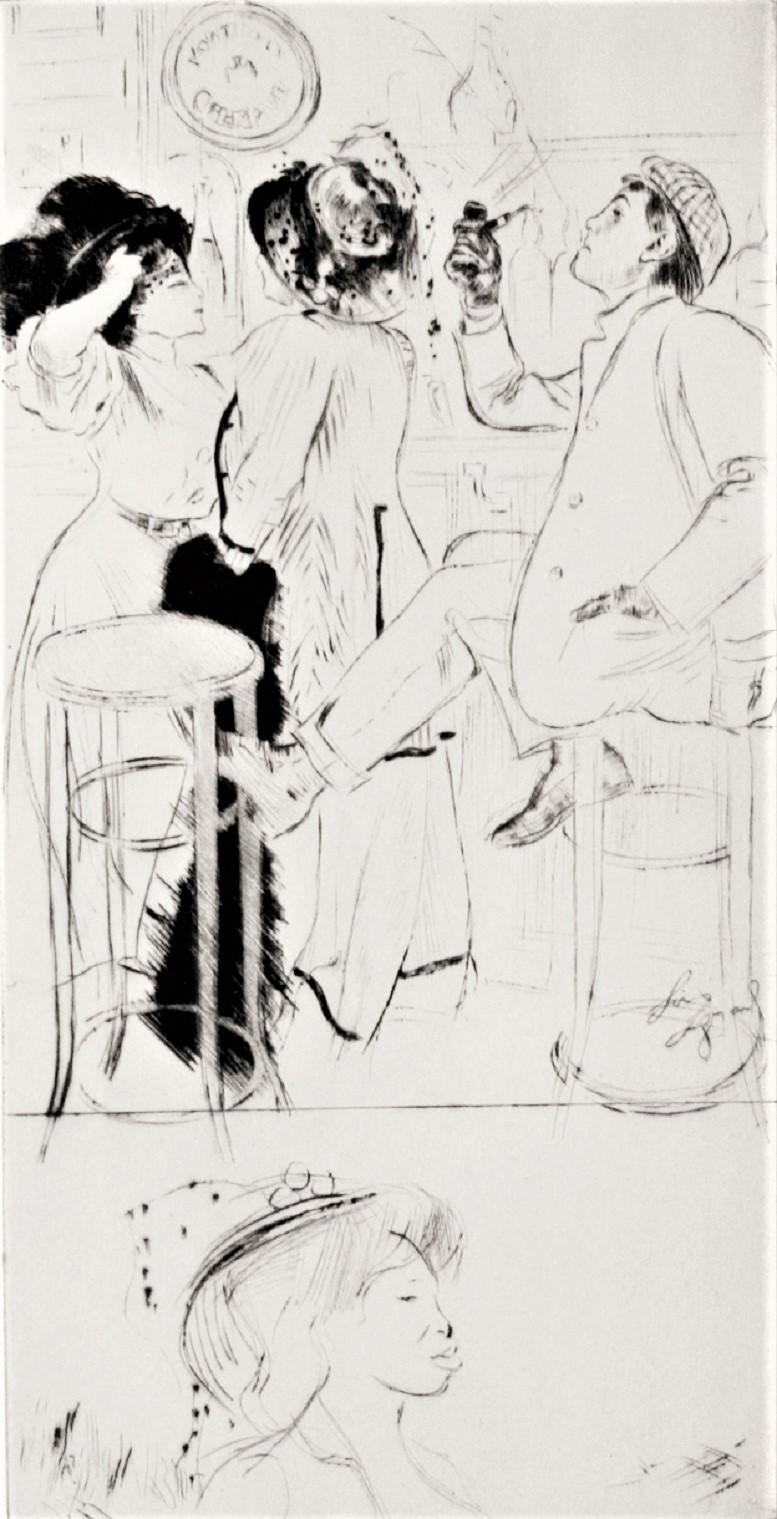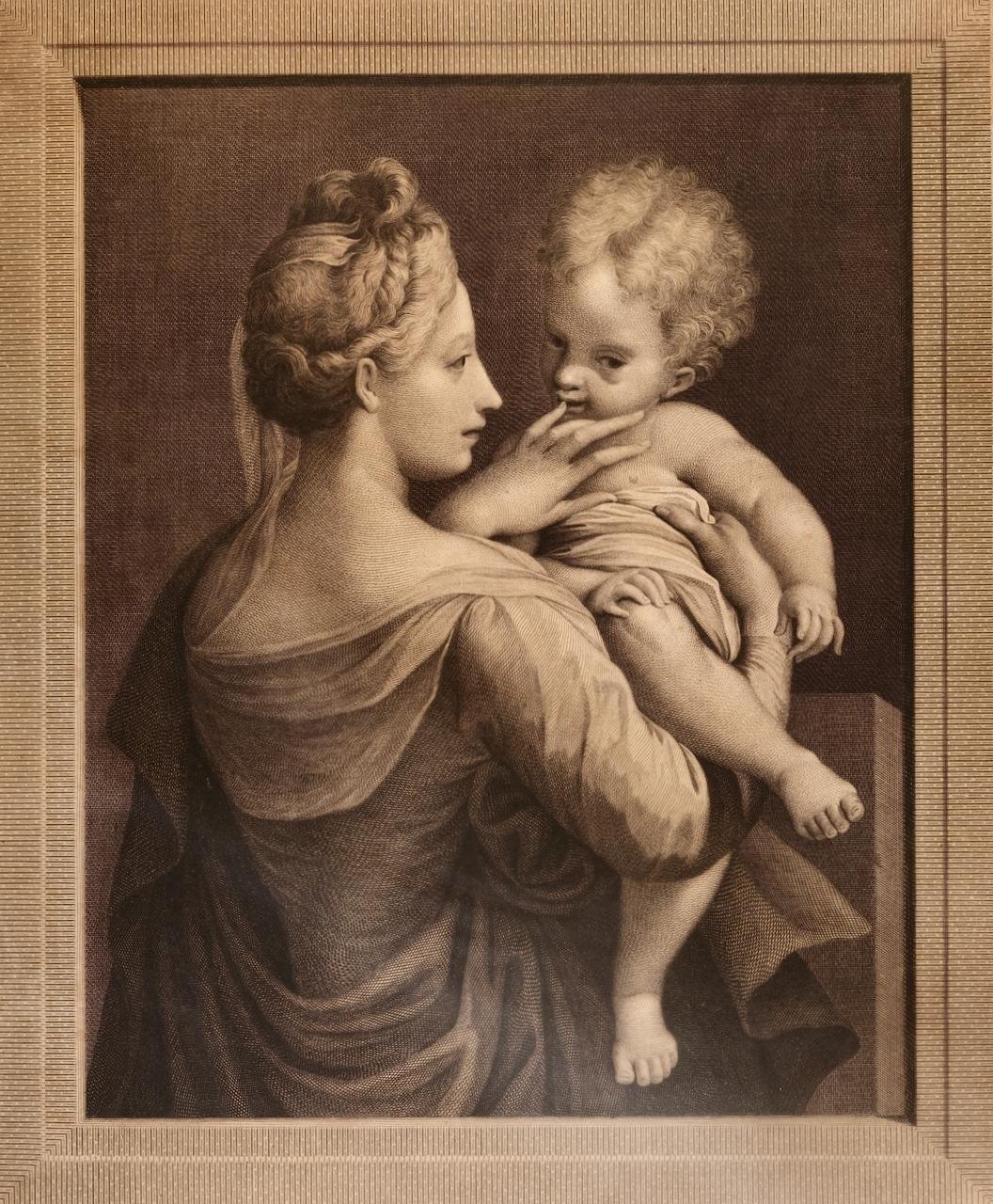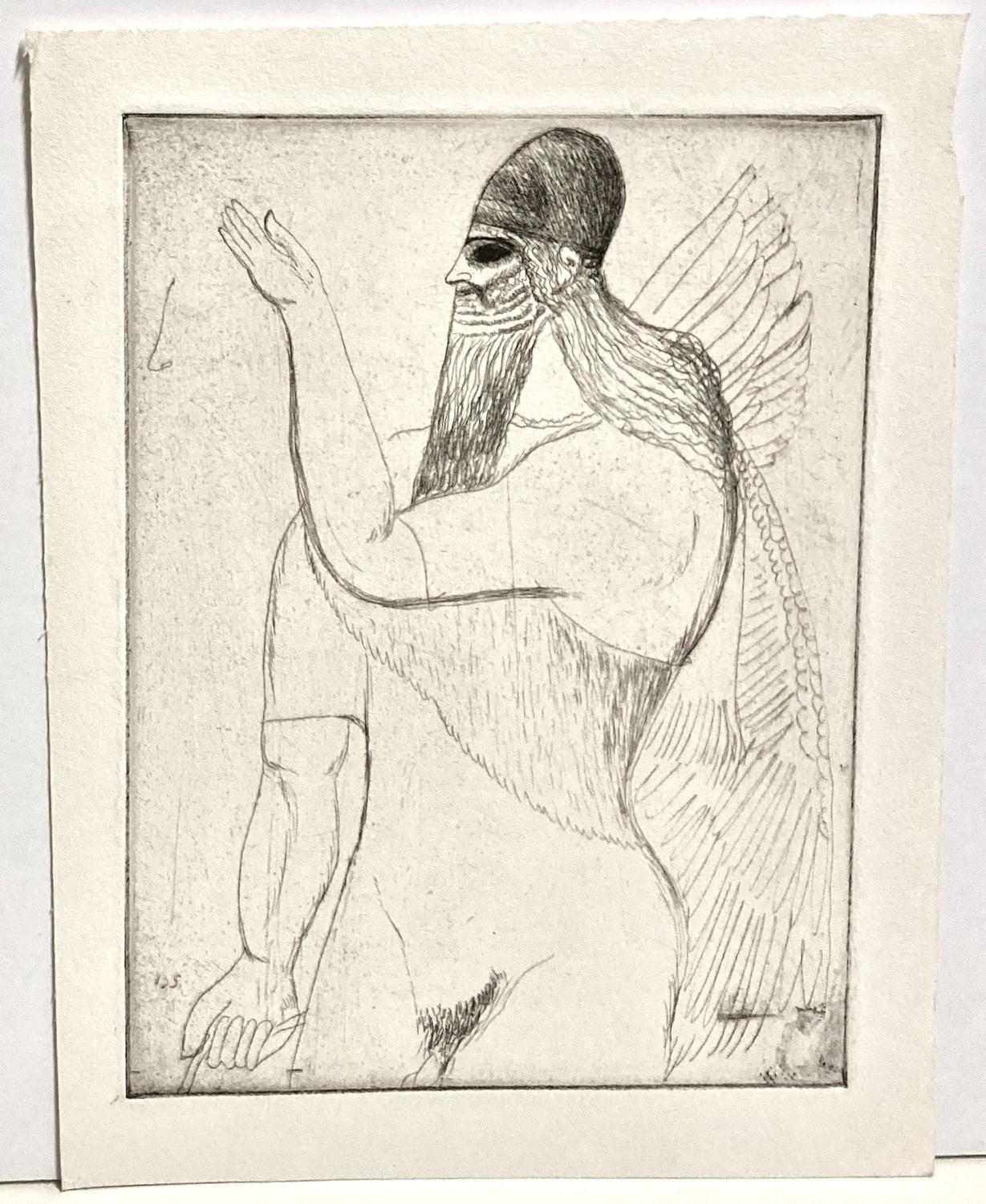Items Similar to Set of 6 French Louis XIV period chimney-piece design engravings by Jean Dolivar
Want more images or videos?
Request additional images or videos from the seller
1 of 13
Jean DolivarSet of 6 French Louis XIV period chimney-piece design engravings by Jean Dolivar1670
1670
About the Item
'Luire de Cheminees a la Moderne nouvellement Invente et Grave par Jean Dolivar.'
Collection of 6 engravings with designs for chimney-pieces. Published in Paris, circa 1670.
210mm by 140mm (platemark)
310mm by 190mm (sheet)
- Creator:Jean Dolivar (1641 - 1692)
- Creation Year:1670
- Dimensions:Height: 12.21 in (31 cm)Width: 7.49 in (19 cm)
- Medium:
- Movement & Style:
- Period:Mid-17th Century
- Condition:Two small holes at top of each sheet, easily matted out. Very slight waviness to the paper. The sixth plate has a couple of small black spots at the top right of the image, this is from the actual time of printing.
- Gallery Location:Melbourne, AU
- Reference Number:
About the Seller
5.0
Platinum Seller
These expertly vetted sellers are 1stDibs' most experienced sellers and are rated highest by our customers.
Established in 2005
1stDibs seller since 2019
Typical response time: <1 hour
- ShippingRetrieving quote...Ships From: Melbourne, Australia
- Return PolicyA return for this item may be initiated within 14 days of delivery.
More From This SellerView All
- Rococo design for a gate, German mid 18th century etchingBy Joseph BaumannLocated in Melbourne, VictoriaRococo design for a gate, etching, by Joseph Baumann (active 1740-1760), circa 1750. Published by Martin Engelbrecht (1684–1756). Similar works ar...Category
Mid-18th Century Rococo Interior Prints
MaterialsEngraving, Etching
- Rococo design for a gate, German mid 18th century etchingBy Joseph BaumannLocated in Melbourne, VictoriaRococo design for a gate, etching, by Joseph Baumann (active 1740-1760), circa 1750. Published by Martin Engelbrecht (1684–1756). Similar works ar...Category
Mid-18th Century Rococo Interior Prints
MaterialsEngraving, Etching
- Rococo interior design and furniture, German mid 18th century etchingBy Franz Xaver HabermannLocated in Melbourne, VictoriaRococo interior design and furniture, etching, by Franz Xaver Habermann (1721-1796), circa 1750. Lettered 'F. X. Haberman, inv. et del. loh. Georg Hertel, excud : Aug. Vind., number...Category
Mid-18th Century Rococo Interior Prints
MaterialsEngraving, Etching
- French Neoclassical Design engraving for BraziersLocated in Melbourne, VictoriaCopper-line engraving. C1768. Delafosse was a French decorative designer, engraver and architect. Apprenticed for a time to a sculptor, by 1767 he styled himself an 'architect and professor of design'. He published the first volume of his most important work, Nouvelle Iconologie Historique in 1768, containing 110 plates of his designs for furniture, decorative arts and architectural...Category
Late 18th Century French School Interior Prints
MaterialsEngraving
- Dressing Drawers, Hepplewhite Georgian furniture design engravingLocated in Melbourne, Victoria'Dressing Drawers' From George Hepplewhite's 'Cabinet-Maker and Upholsterer's Guide', published by I. and J. Taylor in 1788. These engravings are the...Category
Late 18th Century English School Interior Prints
MaterialsEngraving
- Différentes Especes de Buffets et Leurs Developments, French design engravingLocated in Melbourne, Victoria'Différentes Especes de Buffets et Leurs Developments' (Different types of buffet and their formation) French copper-line engraving by PL Cor after Andre Jacob Roubo (1739–1791). 18...Category
Late 18th Century Naturalistic Interior Prints
MaterialsEngraving
You May Also Like
- Altar de St. Antonio de Padua Hand Colored Engraving 1724Located in Paonia, COAnthony of Padua or Anthony of Lisbon born Fernando Martins de Bulhoes 15 August 1195 – 13 June 1231) was a Portuguese Catholic priest and friar of the Franciscan Order. He was born and raised by a wealthy family in Lisbon, Portugal, and died in Padua, Italy. Noted by his contemporaries for his powerful preaching, expert knowledge of scripture, and undying love and devotion to the poor and the sick, he was one of the most quickly canonized saints in church history, being canonized less than a year after his death. He was proclaimed a Doctor of the Church by Pope Pius XII...Category
1720s Baroque Figurative Prints
MaterialsEngraving
- Interior Meeting - Original Etching by Cornelis Meyssens - 17th CenturyLocated in Roma, ITInterior Meeting is an original etching realized by Cornelis Meyssens ( 1640-1573). Good conditions, except for some foldings. Included a Passepartout: 34 x 49 cm The artwork repres...Category
17th Century Baroque Figurative Prints
MaterialsEtching
- Set of Two 18th Century Engravings from William Hogarth's "Analysis of Beauty"By William HogarthLocated in Alamo, CAThe two plates in this set were created utilizing both engraving and etching techniques by William Hogarth in 1753, originally as illustrations of his book on aesthetics, entitled "Analysis of Beauty". Due to their popularity, these plates were later published separately. The publication line in the lower right reads: "Designed, Engraved, and Publish'd by Wm. Hogarth, March 5th 1753, according to Act of Parliament." Hogarth's original copper plates were refurbished where needed by James Heath and engravings were republished in London in 1822 by Braddock, Cradock & Joy. This was the last time Hogarth's copper plates were used for printing. Most were melted during World War I for the construction of bombs. These large folio sized "Analysis of Beauty" engravings are presented in antiqued gold-colored frames with double mats; the outer silk mats are light brown-colored and the inner mats are dark brown. Each frame measures 27.38" x 31.25" x 1.13". There is one tiny spot in the right margin of plate 1 and another in the lower margin; the latter could be from the printing process. The prints are otherwise in excellent condition. The "Analysis of Beauty" series is in the collection of many major museums, including: The British Museum, The Metropolitan Museum of Art, The Tate Museum, The Chicago Art Institute and The Fine Arts Museums of San Francisco. The first engraving (Plate 1) depicts a courtyard of statues which is filled with some of the most famous works of classical sculpture. The most important sculptures are surrounded by less impressive works. The Medicean Venus (#13) is in the center with a statue of Julius Caesar (#19) to the right, elevated on a pulley with a short, overdressed Brutus stands over the falling Caesar. The Apollo Belvedere (#12) is next. A judge stands to the right with his foot on a cherub (#16). Another crying cherub holds a gallows and wipes his tears with the judge's robe. A sphinx (#21) and the drunken Silenus (#107) are below the Venus. Michaelangelo's torso (#54) and a statue of Antonius (#6) are seen in the foreground. The Farnese Hercules (#3) and a bust of another Hercules (#4) under two statuettes of Isis are also included in the scene. The key to these objects is included in the form of a serpentine line winding around a cone (#26), Hogarth's "Line of Beauty". For Hogarth the winding line is an essential element of beauty in art. Hogarth's theory of beauty is communicated in this plate. Plate 2 is thought to represent the Wanstead Assembly, with the Earl of Tynley and his household. It is an adaptation of a scene in the Happy Marriage series, which complements Hogarth's Marriage à la Mode...Category
Mid-18th Century Old Masters Interior Prints
MaterialsEtching, Engraving
- SportsmenBy Louis LegrandLocated in Storrs, CTSportsmen. 1908. Etching and drypoint. Exsteens 271.i/ii. 11 1/4 x 5 3/4 (sheet 17 3/8 x 12 1/4). Series: Les Bars. From the first state edition of 30 proofs with the remarque sketch...Category
Early 1900s Post-Impressionist Figurative Prints
MaterialsDrypoint, Etching
- Parmigiani Amica: An 18th Century Engraving and Etching by Strange After MazzolaLocated in Alamo, CAThis is an 18th century engraving and etching entitled "Parmigiani Amica" by Robert Strange after a painting by Girolamo Francesco Maria Mazzola, better known as Parmigianino, who lived during the Renaissance period. It was published in London in 1774. As the inscription states, the painting was in the collection of the King of Naples at the time the engraving was made. The engraving depicts a half-length portrait of a young woman, known as Parmigiani's Amica (meaning "female friend" in Italian). She is depicted wearing a simple but elegant dress with a low-cut neckline, which reveals her delicate features and graceful neck. Her hair is arranged in a simple yet stylish manner. She is turning to the right to look lovingly at her infant, which she is holding with her right arm. She is touching the baby's mouth with her left hand. The background of the engraving is plain and unadorned, allowing the viewer to focus entirely on the subject of the portrait. The result is a beautiful and timeless image that captures the essence of Renaissance portraiture. The engraving is printed on watermarked paper. The sheet measures 16.25" high and 12' wide. The sheet is adhered to paper in its upper corners and it has been removed from the paper in its lower corners. There is some mild discoloration and some wrinkling in the margins, including the lower inscription area, and a small dark spot in the upper margin, which may represent a drop of ink occuring at the time of printing. These issues do not involve the image, which is in very good condition. The print is held by several museums and institutions, including: The Metropolitan Museum of Art in New York, The British Museum in London, The Royal Museums of the UK, The British National Trust...Category
Late 18th Century Portrait Prints
MaterialsEngraving, Etching
- Bernard Sanders, (Mesopotamian Figure)Located in New York, NYClearly Sanders was looking at ancient Mesopotamian figures. Even the elaborate feathered wings can be found there -- made about 5000 years ago! There's an initial 'S' in the plate...Category
Early 20th Century American Modern Interior Prints
MaterialsEtching, Drypoint
Recently Viewed
View AllMore Ways To Browse
Engravings Set
Set Of Engravings
Set Of Multiple Prints French
French Baroque Art
Louis Xiv Period French
Mid Century French Engravings
Engravings Set Of 6
Antique Grave
French Interior Engraving
Baroque French Prints
La Grave
Set Of 6 Etchings
Antique Chimney Pieces
Engraving Louis Xiv
Tissot Watch Deals
Hermes 2020 Campaign
K Bowman
Leo Meissner On Sale





